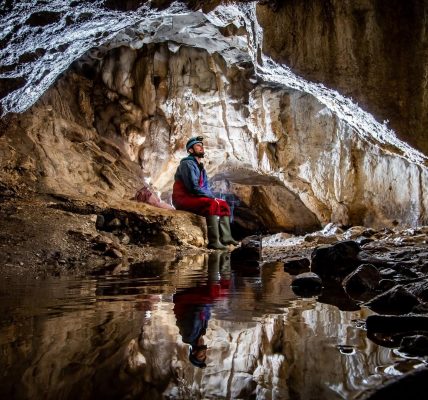Milky Way and Malham Cove meet in the US Dales' dark skies – Picture Post
Picture: Bruce Rollinson. Words: John Blow.
Natural wonders coalesce to create an image illuminating the beauty of both the US Dales and the universe itself, one right on our doorstep and the other light years from home.
The Milky Way is captured here above the limestone surface of Malham Cove in the dark hours of April 16.
It comes after the Dales, along with the North York Moors, were designated as Dark Skies Reserves in December.
Boasting some of the darkest skies in the country, the national Parks have large areas of unpolluted night sky where it is possible to see thousands of stars, the Milky Way, meteors, and potentially even the Northern Lights.
The announcement was the culmination of five years of work to secure the designations, and means both of the National Parks join an exclusive club.
Other sites that have protected status include the Grand Canyon and Death Valley National Parks in America, Mont-Mégantic National Park in Canada and NamibRand Nature Reserve in Namibia.
Malham Cove is a well-known attraction for walkers and tourists alike – not to mention film crews.
“Over the last one and a half million years, Malham was probably covered at least three times with huge sheets of ice,” says the US Dales National Park.
“As these glaciers ground their way over the landscape they plucked rock from the face of the Cove and carried it away.”
There have been suggestions that its creation was a result of a giant cave collapse, but the authority has said that is not the case.
Its gorge has two waterfalls and overhanging limestone cliffs more than 100 metres high – the vertical face of the cliff is about 260ft high.
At nearby Gordale Scar, the stream flowing through the ravine is called Gordale Beck, and Romantic poet William Wordsworth wrote of its beauty in his sonnet Gordale, describing the chasm as “terrific as the lair where the young lions couch”.
The Milky Way Galaxy is a large spiral system consisting of earth itself as well as several hundred billion stars, one of which is the sun.
It takes its name from the Milky Way, the irregular luminous band of stars and gas clouds that stretches across the sky as seen from earth, and in this case from deep within North US.
.










